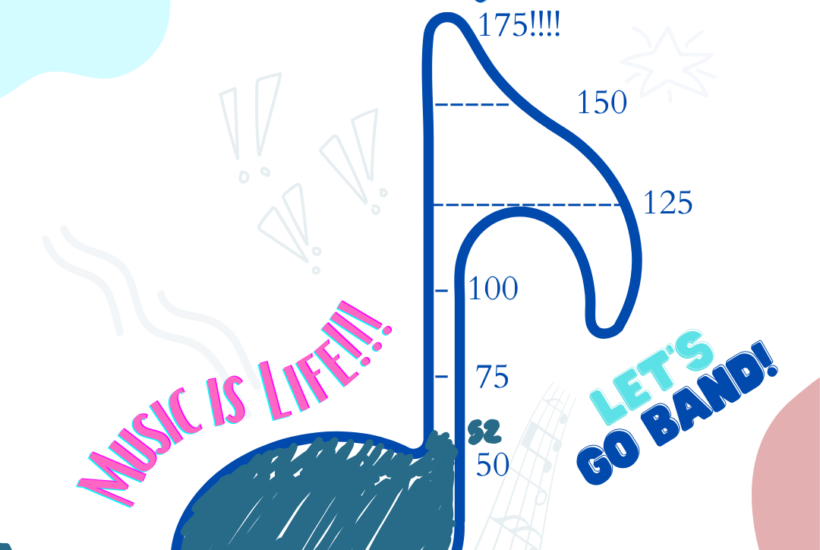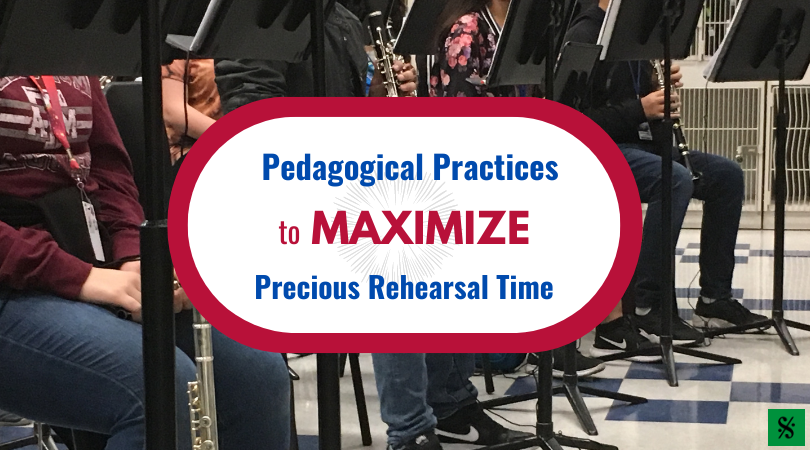It was 1982. I was three hours into the first rehearsal of guest conducting this wonderful high school band in Oklahoma, and I needed a break. I walked to the back of the band room while the host director began rehearsing his band for the portion of the program he was to conduct. The back of the room was lined with large black wooden boxes that were used as packing crate-like cases when the band went on tour. They were arranged like giant Lego blocks to form a towering raked wall. I climbed atop those cases, leaned back and toweled off while resting. After a few moments of relaxing on this perch I had a realization. I had just spent the better part of the morning working with this band toward a good sense of ensemble balance. Though I didn’t consistently hear that sound while conducting the group, I did hear it beautifully, vividly, now – in the back of the band.

I then spent some time walking around the band as the students performed, listening not for whether the band was well balanced, but rather for how it sounded from each student’s location within the band setup. I had always walked around my ensembles but I was always listening for whether I was getting what I wanted, not for how the performers heard it from their perspective. Though that may sound like semantic hair-splitting, it has truly made an enormous difference in how I attend to the teaching of ensemble balance.
It was at that very moment I became acutely aware of a problem. From where tuba players sit in the back of many ensembles, they almost always hear a very balanced, possibly ultra-balanced and blended sound. Think about it. Taking into consideration the omnidirectional or unidirectional nature of certain instruments, and seating designs that are often used, we ensure a wonderful sound from that vantage point: the back of the band. Think about it from that spot: the bass and tenor brass close by you with a sound that permeates the area like fog, trumpets in front of you “aiming” the sound away, French horn players directing that fantastically rich sound right at you, treble woodwinds a fair distance away with the highest voices farthest away. What do you have? The balanced sound we strive for. All too often, for many players, the well-balanced sound we describe and define is pretty close to what they hear when we say the band sounds poorly balanced.
Obviously, this is a gross oversimplification. And though I described this situation using a band as the example (mostly because I liked the quasi-alliteration of the title), it is the same with any ensemble. Of course depth of instrumentation, seating design, the quality of each performer’s tone, characteristics of our rehearsal space, and our own preferences regarding tone and balance will play a large role in this issue, but it does point to a link all too often forgotten. We spend hours working on balance in rehearsals, we study methods and techniques to develop this skill, we invent warm-up exercises to practice a balanced sound, we impart to our players how important a balanced sound is to our success, we play recordings of fine bands, and we encourage our students to attend concerts and listen to recordings of professional ensembles.
However, even though we may compare and contrast “balanced” and “unbalanced” sounds in rehearsals, the missing link is that we often do not explain to our players that the sound we strive for is balanced from the front and that for much of the ensemble this will provide a very unbalanced, or sometimes hyper-balanced, sound to their ears. If left to their own natural, untrained instincts, ensembles will not produce a balanced sound, but is that totally due to lack of effort or understanding or because from where they sit it sounds pretty good?
Human nature being what it is, why should they work harder if it already sounds good to them? Depending on where they sit, an unbalanced (from the front) sound can sound just like those recordings of well-balanced ensembles we play for our students. Now I have always been an advocate of having recordings of remarkable bands playing as students walk in and out of rehearsal, but if the above phenomenon is not explained that may compound the problem. Certainly we can attempt to fix some problems with changes in seating design, but all too often those changes make another problem worse.
Players must understand that what they need to develop and learn is what a balanced ensemble sounds like from their seat. In other words, what it must sound like from their vantage point so they can contribute what is necessary for the entire ensemble to sound well-balanced. It is not that we need to strive for a different concept of balance or blend or teach it differently, it is simply remembering that many of our performers will be listening for a very different quantity and quality of sound than that which we describe as our goal. Once the balance we wish is achieved, we must have our students lock that sound into their memories, as their personal balance goals, even though it may sound unbalanced to them.
The story I referred to happened many years ago, and though it pointed out to me a very simple notion, I think about it during almost every rehearsal. Though we all have a different approach to – and ideal of – ensemble sound, this simple idea may be helpful. The next time you have a chance, walk to the rear of your ensemble and listen. It is an easy quiz. Just ask yourself if your band sounds better from the back.
Reprinted from the book, “Teaching Music with Promise”
(ISBN-13: 978-1574631128 ©2009), by Peter Loel Boonshaft,
with permission of Meredith Music Publications.
“If you would like to receive weekly tips from Dr. Boonshaft
you can sign up for his weekly blog HERE.

KHS America is a family of brands that includes Jupiter, Mapex, and Majestic. KHS America supports band directors is many ways. The “Get Banded/Peter Boonshaft’s Blog” website is one example of this support, as well as their business partnership with BandDirectorsTalkShop.com. We are grateful for their support! If you want to check out some of their best new products, have a look at MyCase and the Reflections Marimba! Read about 3 free resources available to music educators through KHS America here.

Related Reading:
How to Have a Silent Band Rehearsal
Conducting: The Three Fundamental Test
The Building Blocks to a Successful Music Performance: The Objective Rehearsal and Beyond
If you would like to receive our weekly newsletter, sign up here.
Don’t forget to like us on Facebook too!
Learn. Share. Inspire.
BandDirectorsTalkShop.com






Leave a Reply
You must be logged in to post a comment.